When making your own jewellery, the first thing you need to decide is which gemstones you want to use. You need to consider the colour, cut and, for many people, the holistic significance associated with the stone.
At Smyks, we have therefore created this short guide to four very popular gemstones – three green and one red.
Read on and get inspiration on how to choose the right gemstone for your jewellery.
Emerald
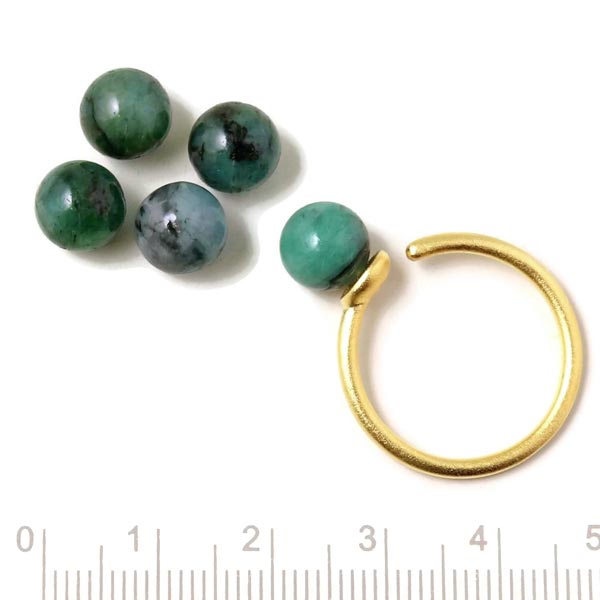
What is emerald?
An emerald stone is a green gemstone. ‘Smaragdos’ is even ancient Greek for ‘green stone.’ Throughout history, emeralds have been one of the most sought-after gemstones due to their green colour.
This green gemstone can be found almost everywhere in the world and has been used in jewellery for thousands of years. Emeralds dating back to 1,500 BC have been found in Egypt. Today, the largest known concentration of emeralds is found in South America. In the past, raw emeralds were often cut and used to decorate the eyes of temple statues. That is why they were also called ‘tears of the gods.’
Emeralds were first introduced to Europe thanks to Marco Polo and his travels in Mongolia and China. However, emeralds were very rare, even after the Silk Road had established trade links between the West and the East.
What is the significance of emerald?
Emerald is considered the astrological gemstone for the zodiac signs Taurus and Cancer. It is also said to symbolise self-knowledge, peaceful dreams and promote patience and balance in one's life. All in all, it is a stone associated with calm, rest and self-insight.
Emeralds have been used to make idols of the Indian goddess Meenakshi and were a favourite of the Spanish conquistador Cortez, who engraved an emerald stone with the biblical quote ‘among those born of women there has not risen anyone greater’.
What jewellery can be made with emeralds?
Emeralds are particularly suited to rings.
Garnet
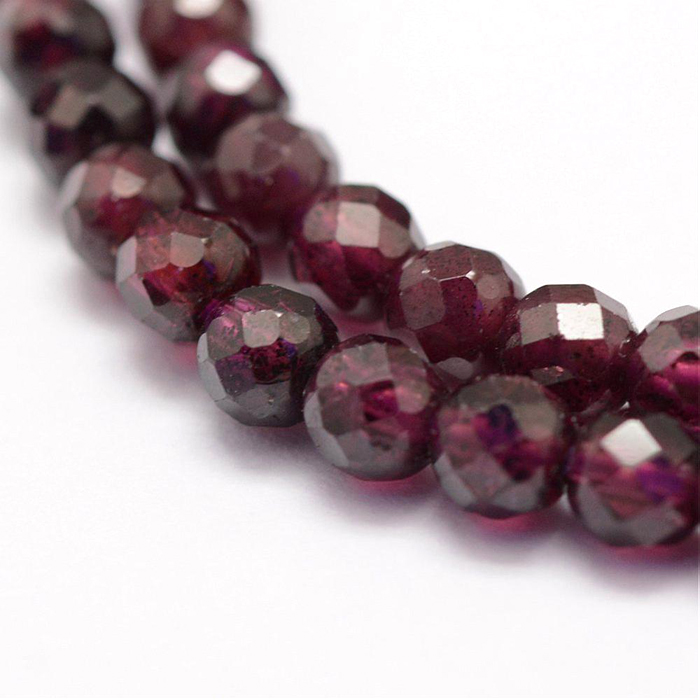
What is a garnet stone?
Garnet is a deep red stone. The gemstone was named ‘garnet’ because it resembles the dark red fruit, the pomegranate. Today, garnet is also used to refer to dark red colours. The gemstone itself is very hard and durable, which is also why it has been used for grinding.
Deep red garnet stones were a very common gemstone in ancient Rome. Here, it was often combined with gold, creating a stunning play of colours.
What is the significance of a garnet stone?
Astrologically, garnet is associated with the twelfth and final sign of the zodiac, Pisces.
This deep red gemstone symbolises passionate dedication. This applies to loved ones, family members, friends and a dedication to a higher meaning in life. It is a joyful stone that expresses vitality and strength.
What jewellery can you make with garnet?
Garnet goes particularly well with gold. This gemstone also helped popularise cloisonné decoration. It is well suited for necklaces and earrings.
Jade
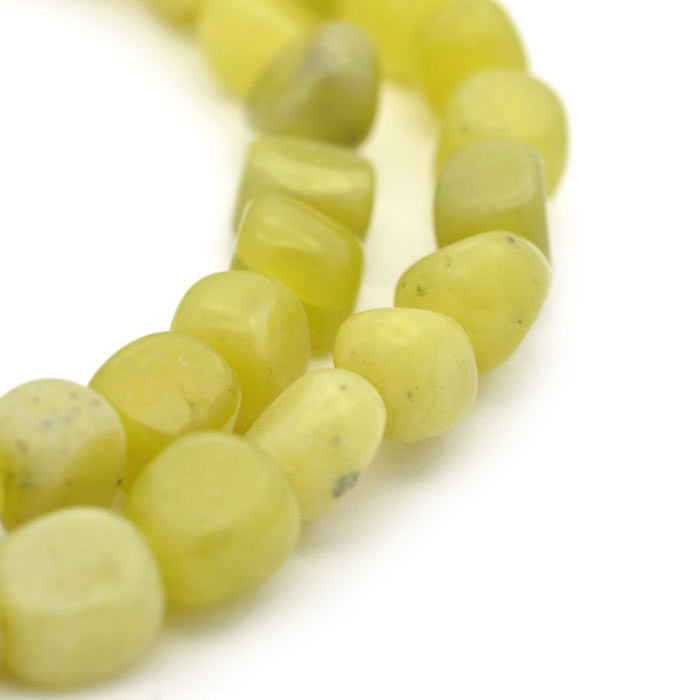
What is jade?
Jade is probably the most well-known green gemstone in the world. It has a rich history, especially in China, where jade has been used extensively by emperors, nobles and for decorating temples and statues. The Chinese word for jade, ‘Yù’, also means ‘the royal gemstone’.
The historical significance of this green gemstone in China is very similar to how gold and diamonds have been used in the West.
Its connection to the Chinese empire has also led to high demand among the growing Chinese middle class today. Even the smallest amount of fine jade can sell for several thousand pounds.
What is the significance of a jade stone?
Jade symbolises wealth, luck and tranquillity. This is due to its association with the Chinese emperor. There has also been a tradition of saying that jade jewellery brings a good harvest.
What jewellery can be made with jade?
At Smyks, you can find several different types of jade and jade-like gemstones.
Jade beads are both real jade and coloured glass-like beads that have the same appearance as jade. They are available in many different colours, making them very popular for jewellery making.
Candy jade, or Malaysian jade/Mashan jade, are beads made from processed glass and/or stone powder, recognisable by their slightly grainy texture. They are not made from genuine Chinese jade, but are a good and affordable alternative.
Jade drops are artificially coloured stone beads in the shape of drops. They are not real Chinese jade, but look very similar. They are particularly suitable for earrings.
Peridot
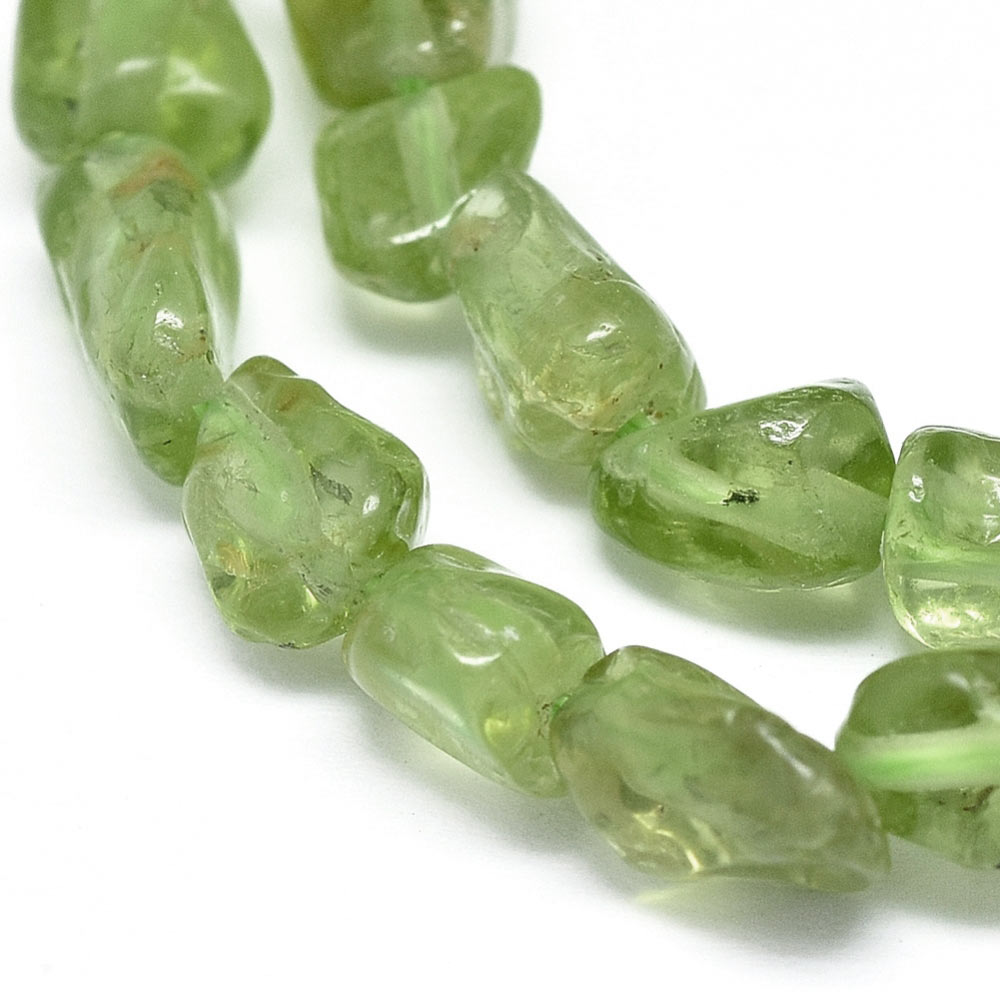
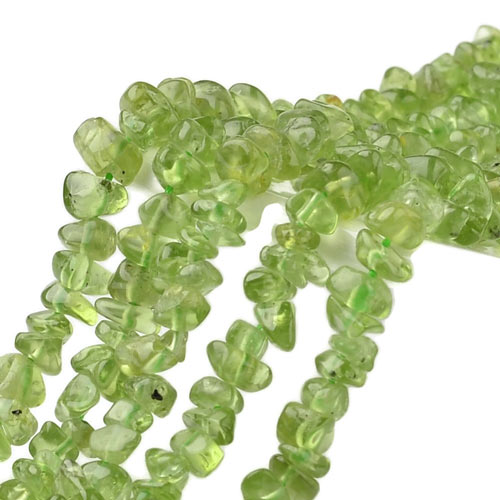 What is a peridot stone?
What is a peridot stone?
Peridot is a green gemstone. However, the green hue varies in intensity because the colour depends on the iron content in the stone. It is believed that the word peridot comes from the Arabic word ‘faridat’, which means gemstone.
Peridot is found all over the world, but it was first documented in England in 1245, when a bishop donated several items, including peridot gemstones, to his monastery.
What is the significance of a peridot?
Peridot is not associated with any zodiac sign, but is said to symbolise life, growth and openness. It is therefore often used in gifts intended to create a deeper bond or understanding.
What kind of jewellery can be made with peridot?
Because it is often a gift between couples, matching bracelets can be an obvious choice of jewellery for the peridot stone.